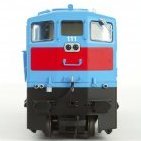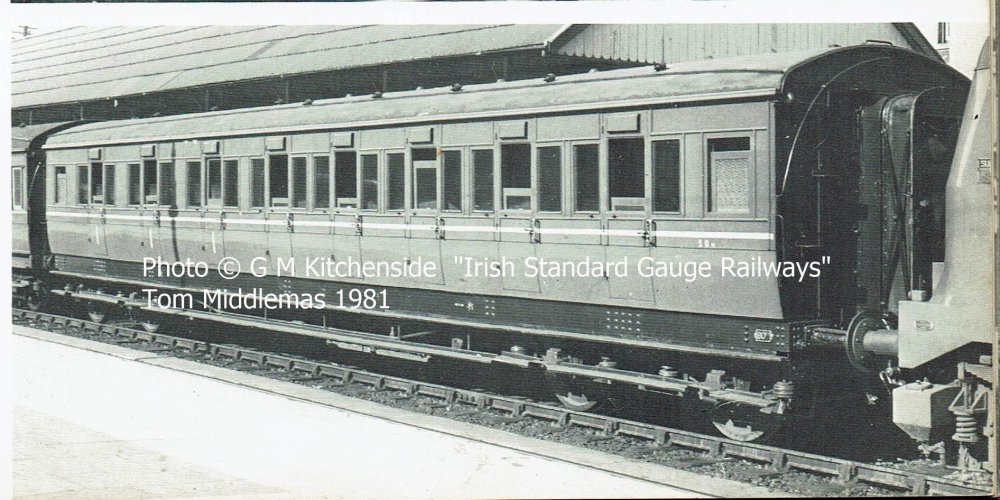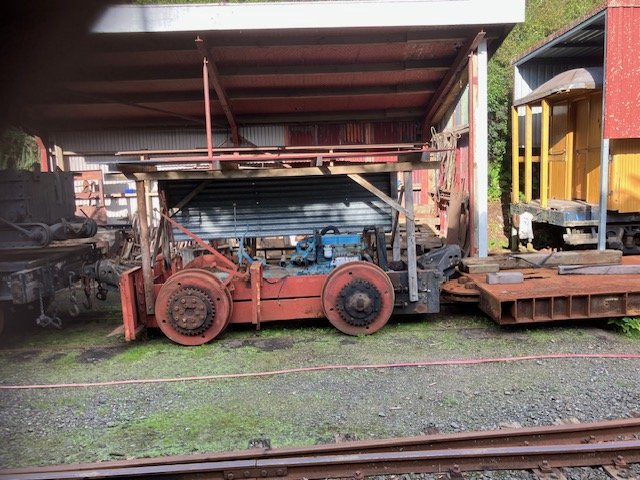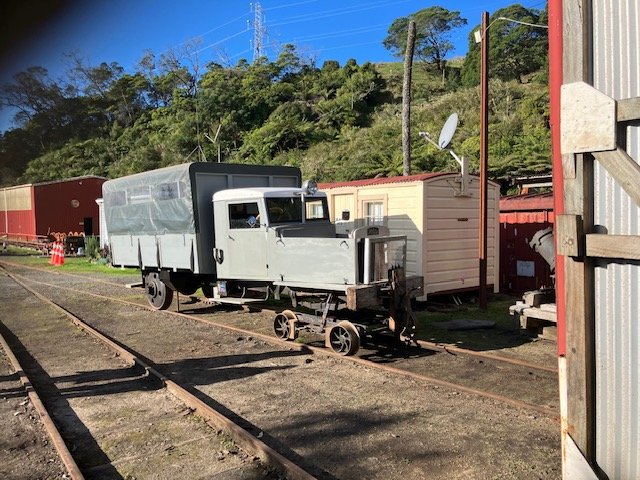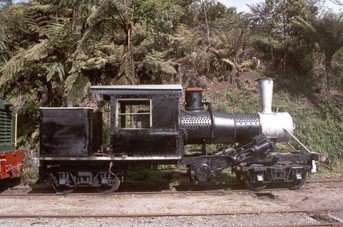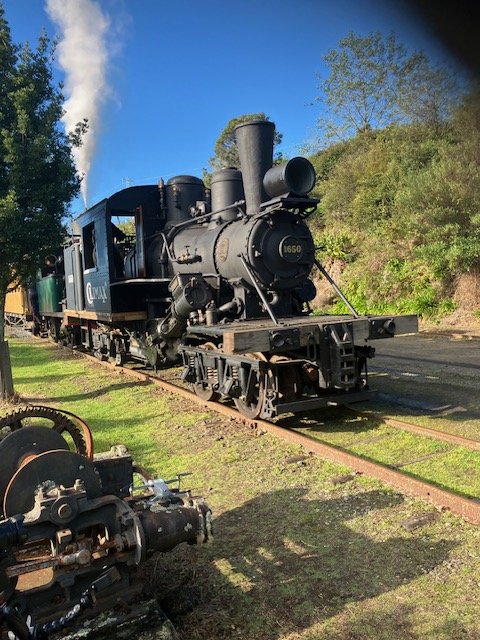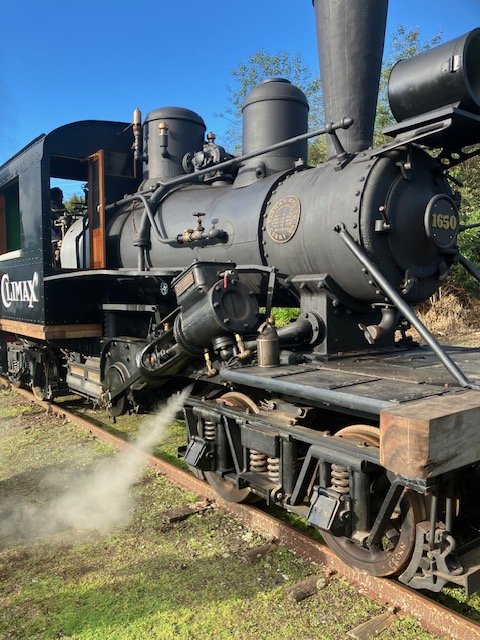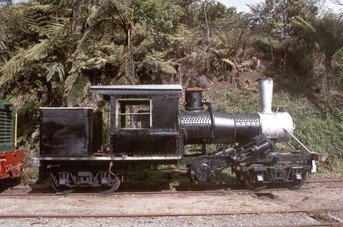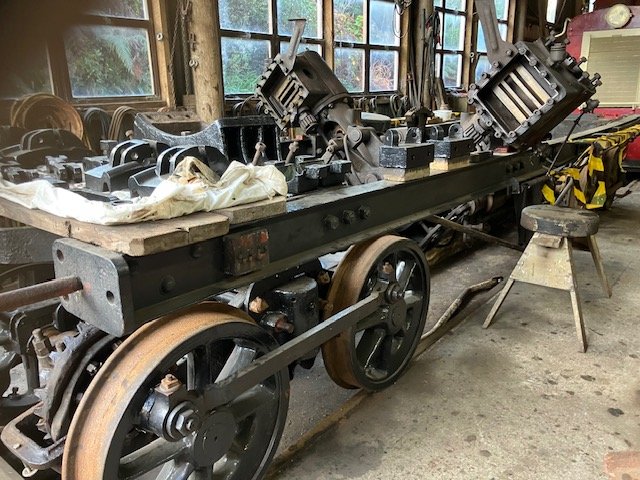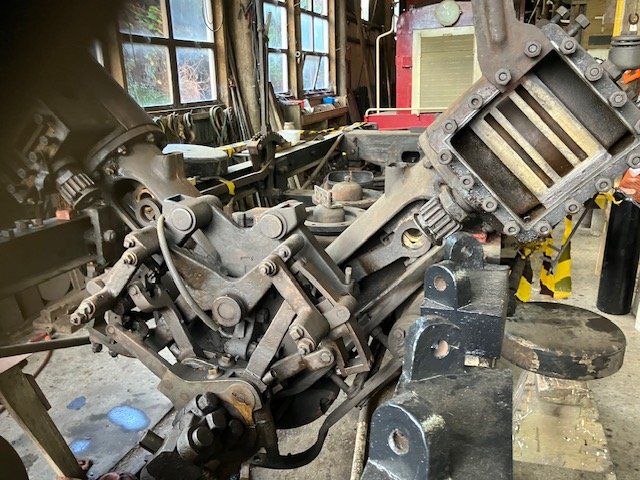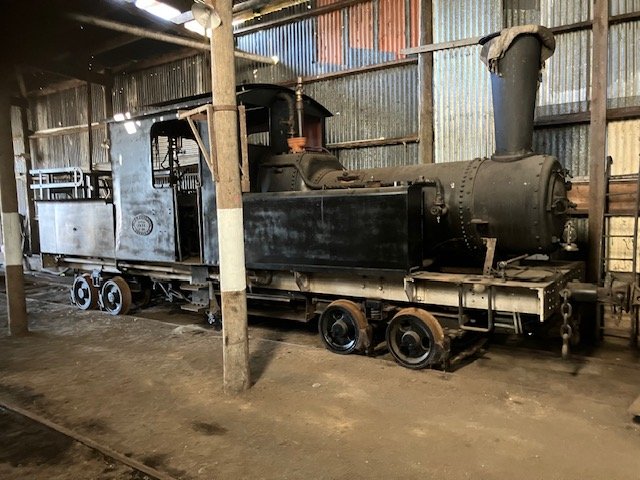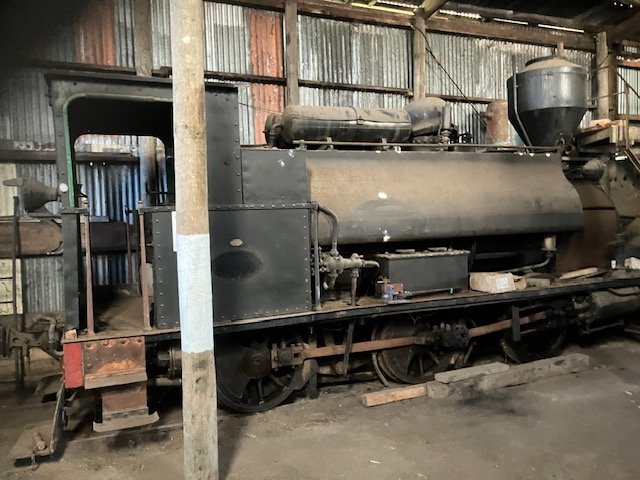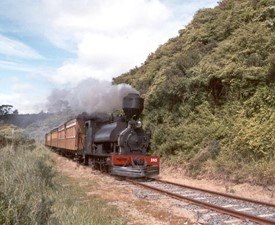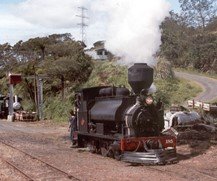-
Posts
4,750 -
Joined
-
Last visited
-
Days Won
119
Mayner last won the day on July 7
Mayner had the most liked content!
Personal Information
-
Location
Hamilton, New Zealand
Converted
-
Biography
Born Dublin, lived most of my life in Dublin and the UK. One time builder, moved to New Zealand several years ago. One time WHHR Volunteer Portmadoc, track ganger, diesel loco driver and bulldozer driver, plant operator, now an Armchair
Converted
-
Interests
My family, solving problems, anything to do with railways, travel, blues, rock, jazz, stirring thing
Recent Profile Visitors
The recent visitors block is disabled and is not being shown to other users.
Mayner's Achievements
-
The final batch of MGW coaches introduced in the 1920s were side corridor 60' vehicles similar roof profile to contemporary GSWR/GSR stock but half round beading & square cornered windows, supposedly the most comfortable 3rd Class coaches on the GSR. Continuous footboards were fitted on the compartment side only, footboards only fitted at doorways on the gangway side.
-

A 3d printed 800 class for 00 (and a WLWR goods loco)
Mayner replied to Killian Keane's topic in Irish Models
Excellent painting and lining job Harry! & Killian's 3D print quality looking forward to seeing the MGWR A when it appears! I don't know about O gauge but I have only used brass handrails and handrail knob (Gibson) in 4mm locos I assembled over the past 40 odd years, all my locos ended up with painted handrails anyway. Oddly I sampled and gave up on nickle silver handrail wire as too soft compared with hard drawn brass 4-5 years ago. -
There was/is a trap with the Airfix/Dapol Stanier coaches the Side Corridor 3rd is a 60' coach the Brake a 57' footer, I nearly ran into the same trap myself. I re-painted a pair of the old style (square plastic axle) Hornby Staniers into CIE livery many years ago, but I decided that shortening a CIE coach by 4'6" was a bridge too far and settled on the Dapol coach as a donor body. Worsley Works GNR(I) coach sides intended to fit Airfix/Dapol,Bachmann& possibly Hornby 57' coach body may be an option for producing GN, UTA/NIR or CIE 50s' or 60s era "Layout Coaches" models are based on "modern' flush sided GN stock used on trains line the Enterprise. The sides were comissioned at the request of Colm Flannigan who creates quite creditable models http://www.worsleyworks.co.uk/Image-Pages/Image_4mm_GNR-I-K15.htm These coaches would have appeared on the Cork Line in GN livery on the short lived Cork-Dublin Enterprise during the early 50s and absorbed coaches would have been re-painted into CIE livery after 58 though withdrawn by the late 60s, used mainly on the "Northern" but also have gotten about, perhaps a GN Enterprise to run with one of Harry's 800?
-
Apart from occasional enthusiast specials and the annual Quigley Magnestite works excursion, I don't know if other passenger specials ran to Ballinacourthy. There was no passenger platform or facilities at Ballinacourthy basically a running line and a loop outside the Plant. There are a number of 70s-80s era excursions (GAA & Listowel Race specials) with a bogie van marshalled next to the loco in the Metrovick and North Kerry Pictorials, including a B141 hauling a 6 coach Listowel Race Special which included a Kitchen Car and a bogie van at each end (1 Luggage Brake, 1 BR Van) The Brake at each end may have been to allow the guard to ride in the rear van if the train reversed direction or on its return journey particularly on a steeply graded section of line such the North Kerry over Barnagh or the central section of the Waterford-Ballinacourthy line. I vaguely remember reading somewhere (possibly an extract from an old rule book) that a maximum of 5 carriages carrying passengers were allowed behind the rear Brake in a passenger train. Interestingly a number of Full-Brakes were fitted out as Bars to run with Excursion trains in GSR days don't know if the practice survived into CIE days. I think its unlikely that the genset in the BSSGV was supplying lighting to the train in the photo, earlier CIE Stock such as the Side Corridor coach were never converted to TL lighting, Park Royal and Laminate stock were not listed as TL stock in the 79 edition of Locos & Rolling Stock of CIE&NIR. As far as I recall travelling on the Dublin outer suburban late 70s/early 80s train was made up of older non-LT coaches with a BSSGV pumping out steam with lighting by dynamo.
-
If the Clonlea (2½ miles east of Dungarvan) location on the caption is correct the train is likely to be a Quigley Magnesite staff excursion which ran annually while the plant was in operation (approx 72-82) The train consist with locos in Supertrain livery and BSSGV bringing up the rear indicate that the photo was taken post 1972, after the opening of the Quigley Magnesite plant and the lifting of the line into Dungarvan Station. Interestingly I travelled on a IRRS special from Heuston to Ballinacourty on the final day of operation and passed the Quigley Magnesite excursion which was hauled by a pair small GMs. The consist of the train without TL lighting and a Buffet Car would have been unusual at the time for a main-line long distance working, at the time the majority of regular main line Links of conventional stock were made up of TL (train line lighting) powered by a BR Van made up of Craven stock, Buffet Car (51-54 stock) strengthened with TL fitted Park-Royal and Laminate coaches. Its possible the train in the photo is made up of a train set borrowed from Dublin Outer-Suburban services for weekend use or a set made up at Waterford or Limerick from spare stock. Beteeen the 1970s and 90s many Dublin Outer-suburban services were cancelled on Friday evenings to release stock to work Friday evening working from Dublin to the provinces and return Sunday afternoon-Monday early morning return working to the provinces. At the time the Dublin Outersurban trains loaded to a BSSGV and 3-4 misc coaches.
-
My 21 March 2021 covers my approach to fitting my coach side overlays to the Airfix/Dapol Staniers including forming the tumblehome. Basically I ended up gluing the roof to the body and cutting a hole in the coach floor big enough to fit the interior. Several years ago I built a train of 5 CIE coaches in late 50s green including a Buffet for a customer in the UK, but didn't build any for myself and probabably never get round to it as I have shifted back to the GSR era. I have 6 SSM ex-GSWR 6wheelers to complete before moving my thoughts to some ex-Midland 6w and Bogie stock. Worsley Works produce sets of etched parts (except roof) for Park Royal and Laminate coaches (scale width/length) similar in general principal to Comet Kits- http://www.worsleyworks.co.uk/NG/NG_NIL_Art1.htm greatest challenge is forming the roof. These days the simplest approach would be to ask someone to produce a 3D printed roof to the correct profile.
-
Funnily enough the Blue Sliding Tarp wagons reminds me of the wagons that run through our neighborhood on a 125mile journey between a steel mill and port. Strictly speaking HO scale/gauge is incorrect for 3'6" narrow gauge local modellers tend to use Scale on HO track (Sn3.5) while some Aussie. (Queensland) modellers use HOm although the gauge is out by 3". Being independently minded Australian States with 3'6" narrow gauge systems each tend to use a different scale/gauge ratio
-
I posted a set of Laminate Diagrams in the Resources section of this Newsgroup and will post further CIE diesel loco, coach and wagon drawings when I have the time. IE may have disposed of drawings of withdrawn/scrapped stock as they are no longer of relevance to Irish Rail, when I requested the Laminate & Park Royal drawings some of these coaches were running on the system in RPSI service.
-
I last received Park Royal & Laminate diagrams (FOC) from the CMEs office about 20 years ago. It might be worth contactiong IE directly if your looking for drawings or diagrams of stock thats currently in service.
-
Diagrams of 70 and 64 seat 2nd/Standard Class Laminate coaches supplied by the CME Office at Inchacore several years agon. 1444-1448 Series 700 seat Laminates built 1956-7 1449-1496 Series 70 seat Laminates introduced 1958-----------------Worsley Works produced an etched set of parts for this type of coach and the 1909-1913 Laminate Brake Standards introduced 1959 GA Drawing of 8' Commonwealth bogie used under many CIE coaches introduced during the 195os including post 54 CIE "Bredin Stock" (timber framed body), Park Royal & Laminate stock.
-
The arrangement of the buildings and the crossover from the Cattle Bank road to the main line with its double slip connections really capture the atmosphere of Liffey Junction even in its final years https://www.facebook.com/GlasnevinHeritage/posts/liffey-junction2-nice-photos-by-pat-mcquail-1984/924132183078495/
-
At one stage the Chief Mechanical Engineers Office at Inchacore supplied locomotive and rolling stock drawings to enthusiasts (free of charge) upon request, but may no longer be responding to requests from enthusiasts and may no longer hold drawings of older stock such as the Laminates. I have diagrams of 64 and 70 seat Laminate coaches supplied by CMEs Office about 20 or so years ago, and will post in the Resources section when I find time, Pauls post also reminds me that I need to scan my collection of GN Wagon Diagrams!
-

Climax Locomotive 1650 restored to steam after 68 years
Mayner replied to Mayner's topic in Photos & Videos of the Prototype
Some odd IC stuff too Steam often replaced by "Tractors" manufactured by foundries in remote area's that once produced steam powered machinery for the mining and logging industries, this leading axle on this tractor would have been powered by a chain drive from the rear axle. Possibly from the Dispatch Foundry on the West Coast of the South Island and important mining area. "White Jigger" or railtruck converted from a White Truck (US manufacturer) once used to transport workers on a bush tramway in the Central North Island, an extensive restoration was carried out by the owner in his own workshop. Truck is used to give passenger rides on operating days won a Weta Workshops award for Creativity in Restoration. A second more ornate Chevvie truck required a more extensive restoration https://www.bushtramwayclub.com/locoimages/indexbushjiggers.html- 1 reply
-
- 5
-

-
Visited the Bushtramway Club on their monthly operating day yesterday my first afternoon off in two years, the big surprise was to see Climax 1650 in steam operation double heading a passenger train. The loco owned by a Trust was last steamed 65 years ago and recently won this years Federation of Railway Organisations of New Zealand restoration award. Yeah the Climax was in steam, being a geared loco moving very slowly not showing smoke and steam as I toook the photo. I had last seen the loco un-restored about 12 years ago The Climax locomotives were American manufactured geared locomotives capable of running on steeply graded, sharply curved, often temporary track once common on Logging Railroads or Bush Tramways (NZ) and once were a popular type on Bush Tramways. 1650 which was used on one of the last remaining Central North Island bush tramway operations was rescued by a group of enthusiasts during the 1960s and restored to working order off site in a Central North Island general engineering workshop in the region where the loco formerly operated. Ironically I noticed a steam loco cab outside the workshop while working in the area but never drew the connection with the Climax or called in to have a look. The Bush Tramway has a collection of ex-mail line and industrial locos (drawn from logging, dairy and meat processing industries) with a high proportion of the restoration work carried out in the railways own workshop. Along with the Climax the Bushtramway Club has a collection of geared locos including a Heisler (American manufacture) and a couple of NZ built A G Price locos The Heisler currently under overhaul is similar in general principal to a Climax but with the engine arranged in a V powering a driveshaft which transmits power to the bogies by sets of bevel gears at the outer end of the trucks (bogies) with coupling rods transmitting power to the wheels. The Heisler boiler is currenty offsite for major repairs. A "Price B" the local equivalent of a "Climax A" powered by a vertical steam engine in the cab, boilers often un-lagged on NZ "Bush Lokies" This loco regularly ran up & down the Pukemiro station yard on operating days. More conventional the NZR F Class 0-6-0ST the standard main line loco of the early years of the New Zealand railway system until replaced by increasingly larger locos as the system expanded and loads increased. This loco 185 was sold into industrial service with one of the local coal mines and and the regular 'main line' loco on the Bushtramway during the 2000s but requires major boiler/firebox work.
- 1 reply
-
- 7
-

.png.c363cdf5c3fb7955cd92a55eb6dbbae0.png)

